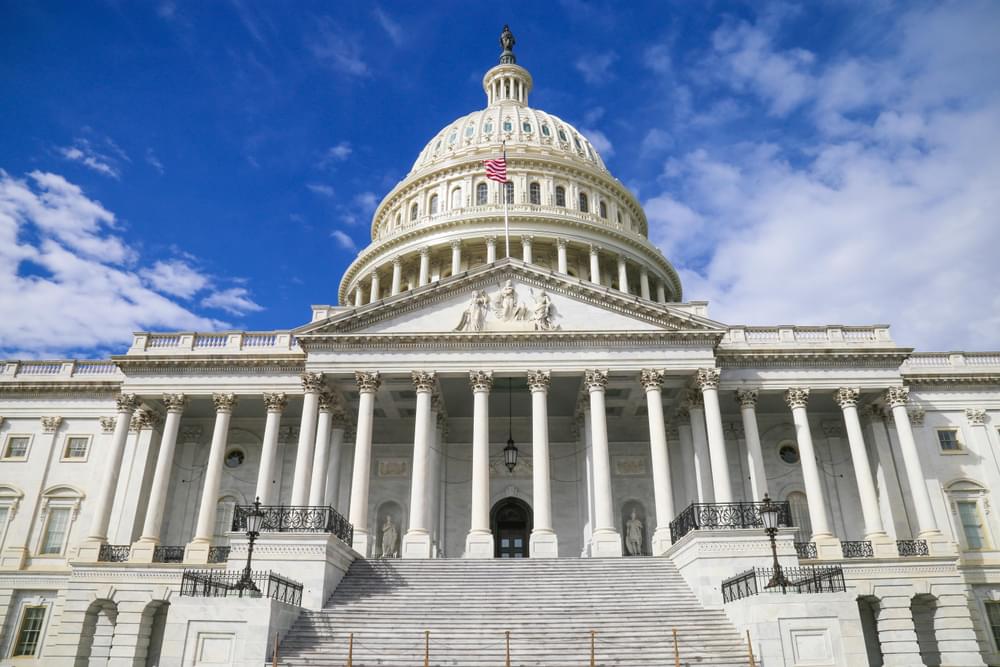




Adequate Federal Funding for Trails
On behalf of the thousands of diverse trail users our collective organizations represent, we urge appropriators to adequately invest in our nation’s trails.
by Tyler Ray, Senior Director for Programs and Advocacy, American Hiking Society

National Forest trails benefit everyone and receive increasing public use each year. Collectively, the National Forests provide 158,000 miles of trails for activities ranging from hiking, biking, horseback riding, off-highway vehicle usage, groomed winter trails for cross-country skiing and snowmobiling, and access points for water trails. Yet this trail system is increasingly stressed and maintenance cannot keep pace with the growing demand due to inadequate funding.
● $100M to fund Capital Improvement and Maintenance, Trails (CMTL)
● $261M to fund Recreation, Heritage, & Wilderness
● $50M to fund Legacy Roads & Trails as a separate line item
National Parks and the world-class experiences their 18,844 miles of trails provide are one of the most unifying forces in America. Well-maintained trails improve the quality of visitor experiences and enhance visitor safety. The National Park Service has administrative responsibility for 23 National Scenic and Historic Trails established by Congress. Adequate funding is essential for keeping these popular trails accessible to the public.
● $16.5M as a minimum to fund Park Service Operations for the National Trails System
● $13.478M to maintain funding for the Rivers, Trails, & Conservation Assistance (RTCA) program
● $1.5M to restore the Challenge Cost Share program funding
● $8M to restore funding for Volunteers in Parks programs funding
● $10.95M to fund Visitor Services sub-activity, Youth Partnership Programs

Subscribe to our email list for updates and opportunities to help. Subscribe now.
The BLM manages 13,468 miles of trails over 245 million surface acres in the United States— more than any other federal land management agency. More than 120 urban centers and thousands of rural towns are located within 25 miles of BLM lands.
● $84M to fund National Conservation Lands
● $9.9M to fund National Conservation Lands - National Scenic and Historic Trails, sub-activity Recreation Resources Management
● $3M to increase Challenge Cost Share program funding
Located in every US state and territory, and within an hour’s drive of nearly every major US city, National Wildlife Refuges provide incredible opportunities for outdoor recreation, including hiking, hunting, fishing, birding, boating, and nature photography across 2,100 miles of trails. More than 37,000 jobs are reliant on refuges.
●$74.227M to maintain Refuge Visitor Services
Across all agencies, Congress recently showed overwhelming bipartisan support for the Land and Water Conservation Fund (LWCF) when it permanently reauthorized the program. Building upon this support, please support full funding of the program. The LWCF has funded nearly 1,000 trail projects and thousands of other projects ranging from National Parks and Forests and Wildlife Refuges, to community parks and ball fields in all 50 states.
●$900M to fully fund LWCF
● $33.4M to include National Scenic and Historic Trails projects within LWCF
The Department of Commerce’s Bureau of Economic Analysis publishes the ORSA report marking a critical step forward for the trails and outdoor recreation industry by formally recognizing its economic influence.
● $1.5M to fund the Outdoor Recreation Satellite Account
THANK YOU FOR SUPPORTING AMERICA’S TRAILS AND OUTDOOR
RECREATION COMMUNITIES!
Attached document published March 2020
Apply for The Trails Capacity Program
posted Dec 3, 2023
The Trails Capacity Program is administered by American Trails, and funds trail maintenance, research, and stewardship training across the country, serving all types of trail users.
Forming and Running State or Regional Trail Coalitions – Important Points and Practices
posted Nov 27, 2023
Have you ever wondered how to create a trails coalition in your state or region? This article shares some pointers and discusses the results of a nationwide survey of trails coalitions conducted by American Trails in February 2023.
Waiver of Buy America Requirements for De Minimis Costs and Small Grants
posted Aug 22, 2023
A long-standing impediment to effective implementation of the Recreational Trails Program (and other federal funding of trail projects) has been addressed by the Federal Highway Administration (FHWA).
American Trails Announces $500K Fundraising Goal for the Trails Capacity Program
posted Apr 5, 2023
The Trails Capacity Program administered by American Trails is funded by sustaining corporate sponsors and individuals. We are excited about our fundraising goals, and looking forward to opening the program later this year as funding is secured.
1,638 views • posted 03/02/2020